May 7-13, 2023
The Fullness of Spring
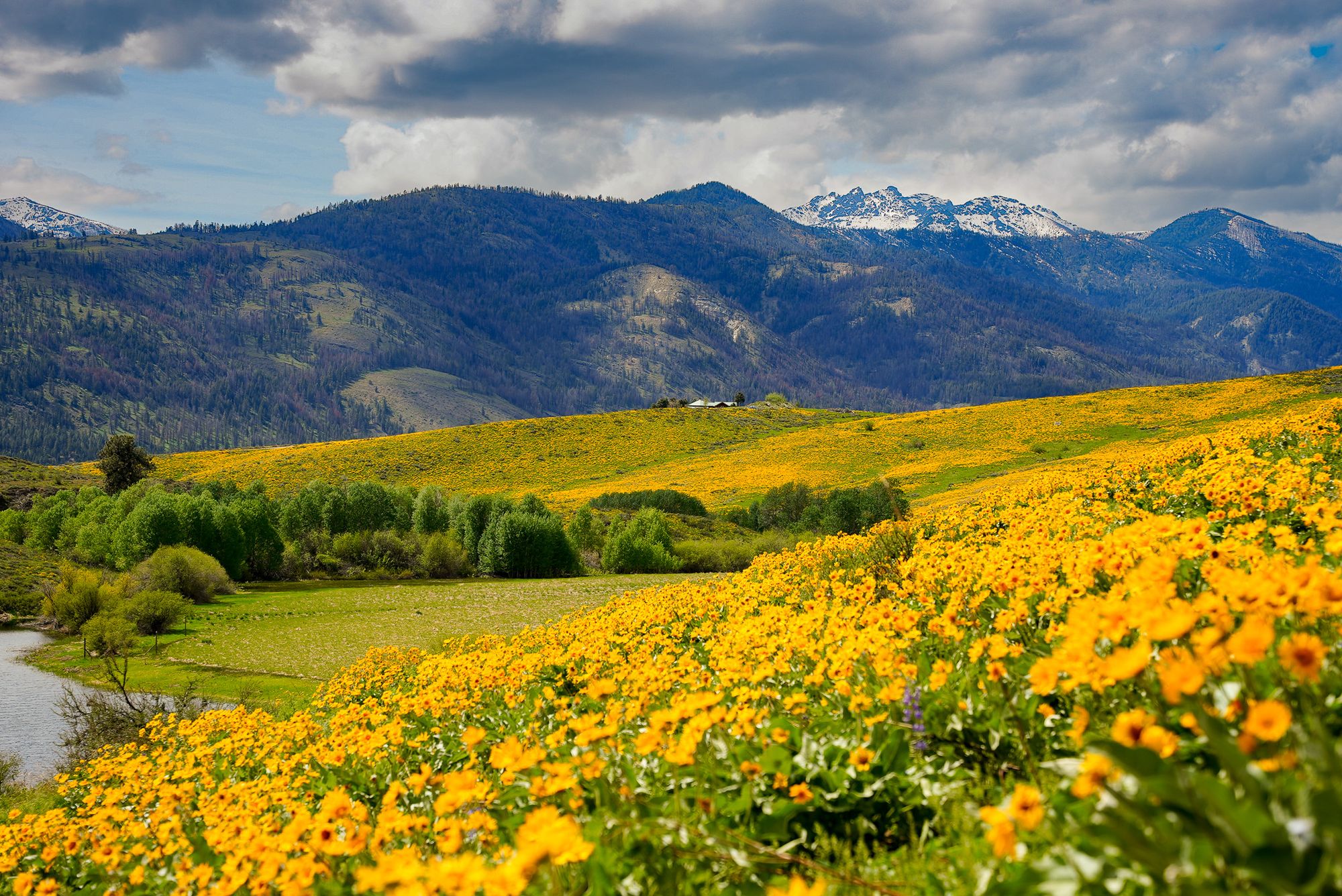
It feels like this week and next week are going to be the peak of spring in the Methow Valley: The air smells fantastic, everything is impossibly green, countless flowers are blooming, and birds are singing everywhere.
Pleasant weather, and pleasant temperatures have finally settled into the Methow Valley, though we have also had some days of dramatic skies. This has us wondering if there are times of year when the sunsets are more beautiful and unusual than other times. What do you think? Does anyone have a sense of this, and does anyone keep track?
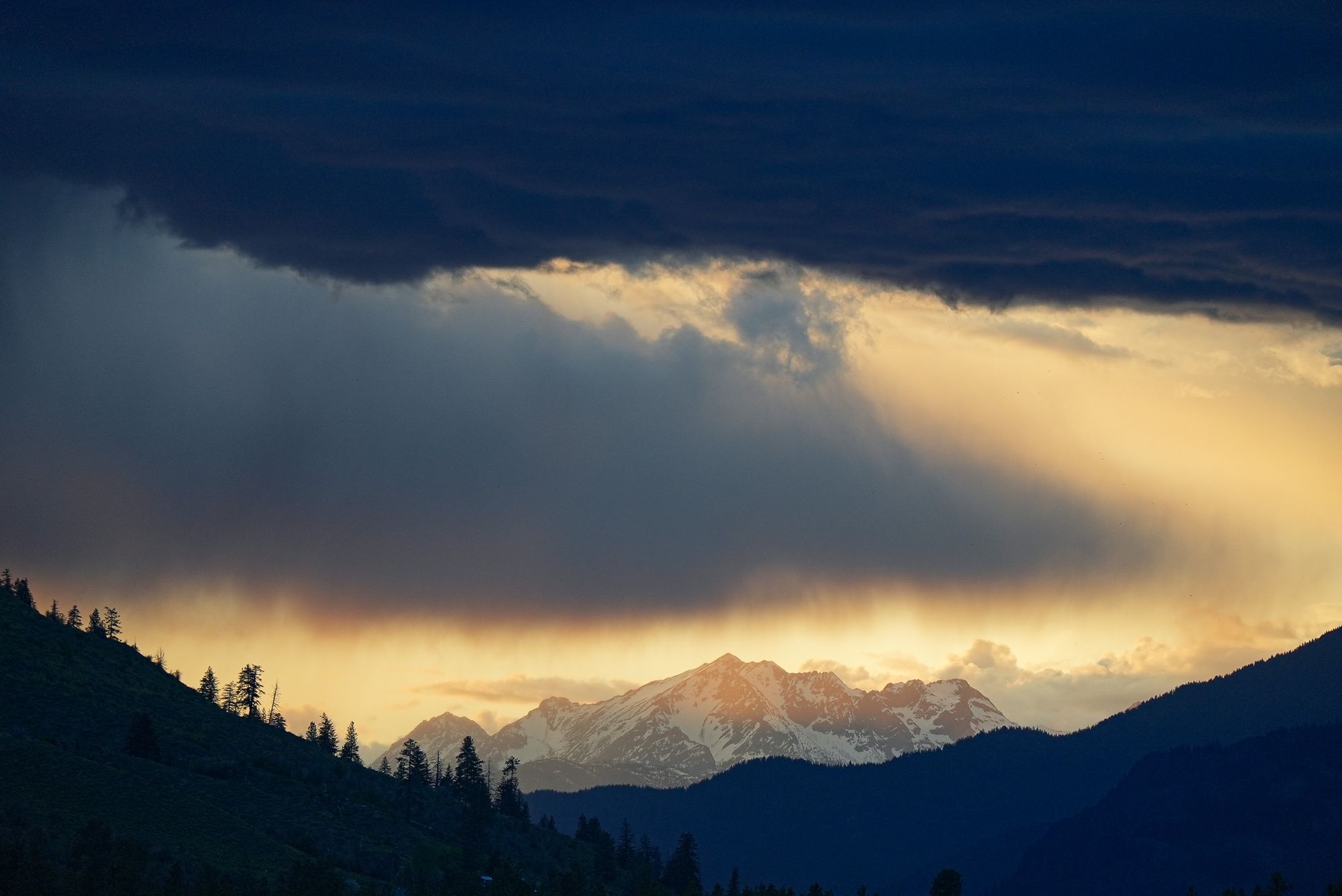
If nothing else, this is definitely the best time of year for flowers! Arrowleaf balsamroots are still in their full glory, although the band of yellow they create on hills has moved several hundred feet upslope in the past week while balsamroots on lower slopes are looking decidedly jagged as they start to drop petals.
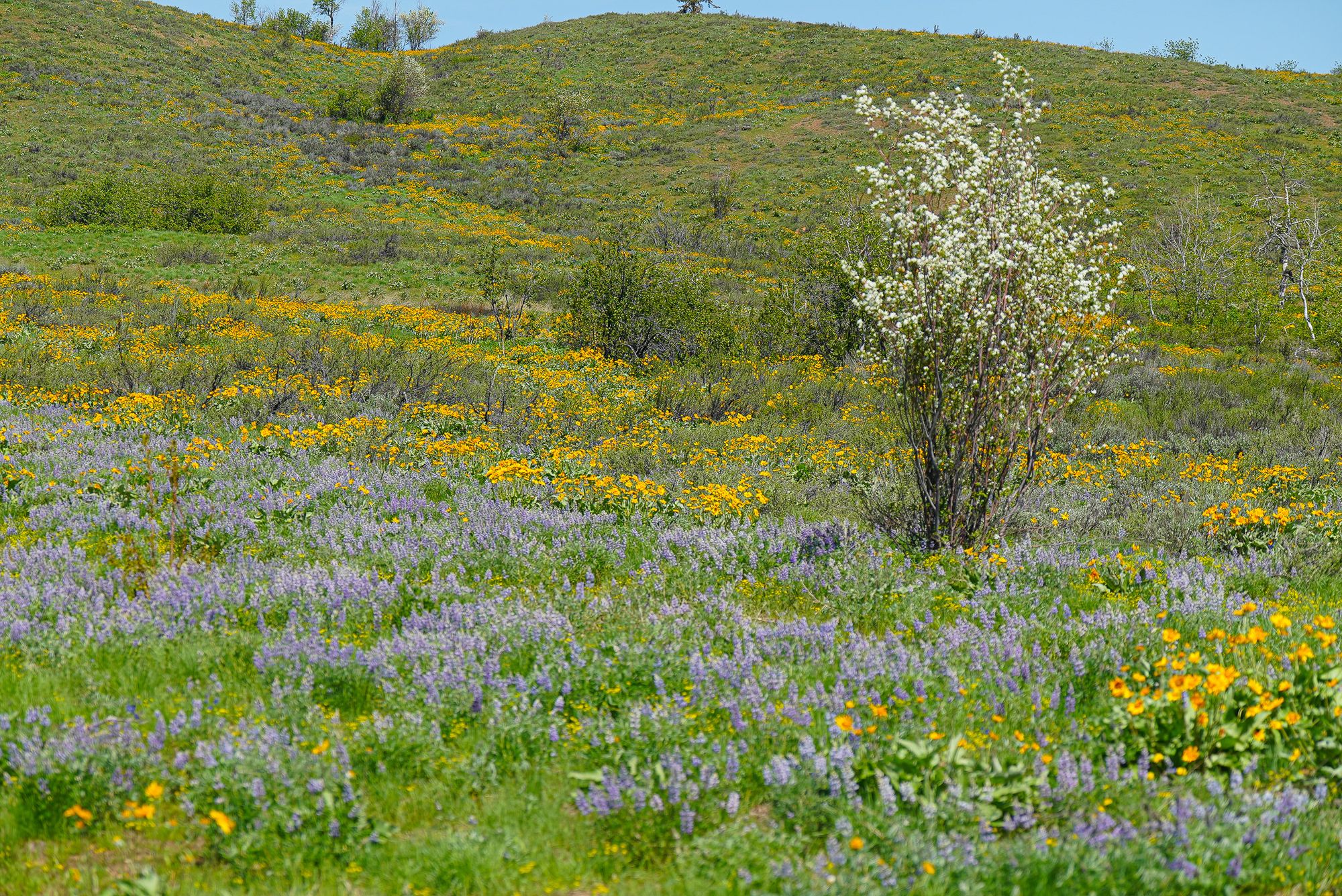
Depending on location, slope aspect, and habitat many other flowers are also at their peak bloom. These include silky lupine, Nuttall's larkspur, prairie star, and the tiny purple flowers of small-flowered blue-eyed Mary.
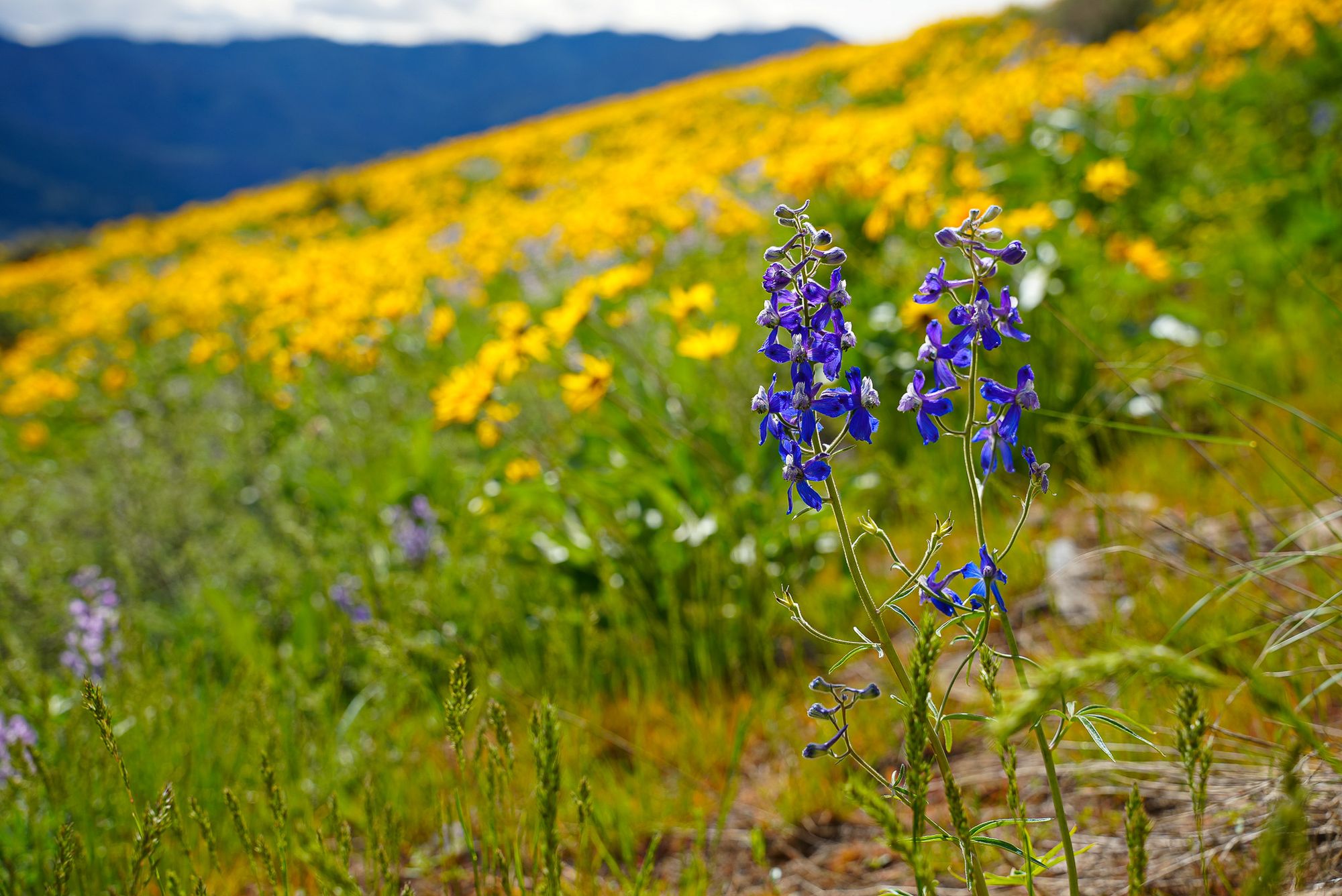
Smaller numbers of many other flowers are appearing around the valley, or occurring in local patches. For example, you can now find paintbrush and violets; and we were pleased to find vibrant patches of the remarkable Tweedy's lewisia along the Chewuch River.

In the meantime, drier hillsides of grasses and bitterbrush are absolutely loaded with 3-4 species of flowering lomatium (desert-parsley), which are a critical flower for pollinators. They are among the favorite flowers for native flies because their nectar is crystallized and is meant to be harvested with the "spit-and-lap" technique that flies use. To learn more about this, and other interesting facts about lomatium, check out the video I made last year, Common Flowers of the Methow Valley: Three Common Lomatiums.
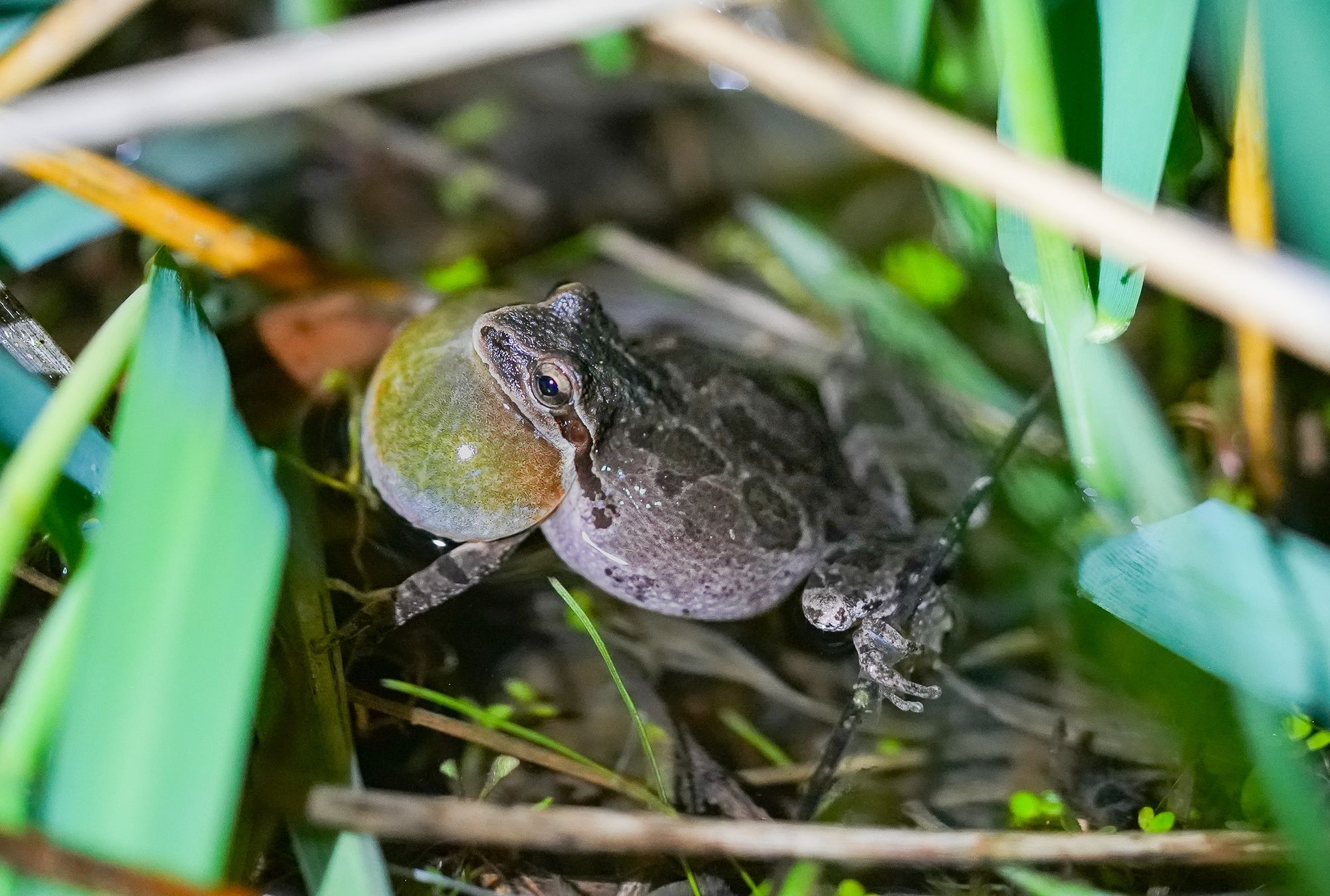
Birds are busy, and singing, everywhere in the valley. And, if the fact that things have quieted down at our nestboxes is any indication, I'd guess that many species are already quietly laying eggs, even as other species are still arriving and getting settled in. I heard my first northern oriole and saw my first Lewis's woodpeckers on May 12, and sandhill cranes were observed around the valley throughout the week.
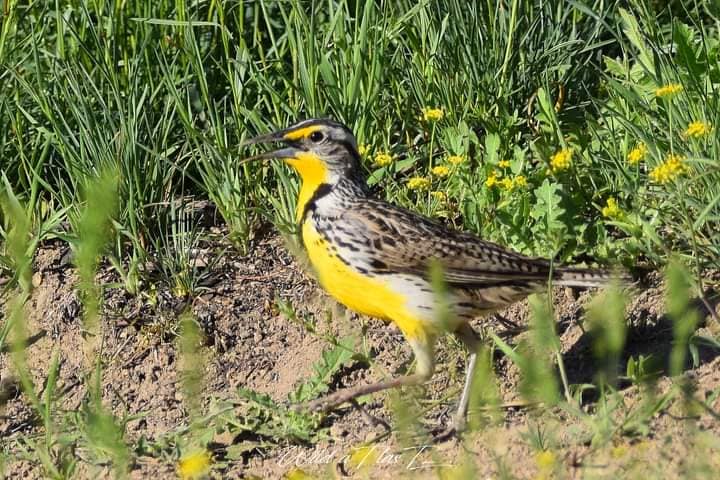
In terms of mammals, my only notable observation this week was finding a snowshoe hare that was almost entirely brown. No other mammal observations were posted on the Facebook group so I'm curious what mammals are doing right now.
Observation of the Week: Queen Bumble Bees

For several weeks, people have been observing large queen bumble bees. This is an critical time of year for these important pollinators so it's helpful to learn what's going on here.
Unlike honeybees that overwinter in large colonies and maintain a constant temperature by eating stored honey and shivering, queen bumble bees spend their winters alone, hiding underground in deep hibernation and many queens do not survive hibernation.
As soon as snow melts, and the ground warms up, surviving queens rouse themselves and emerge to start new colonies. This is a tough time for these females. Flowers can be few and far between, and their first order of business is finding enough food to survive while also searching for future nest sites.
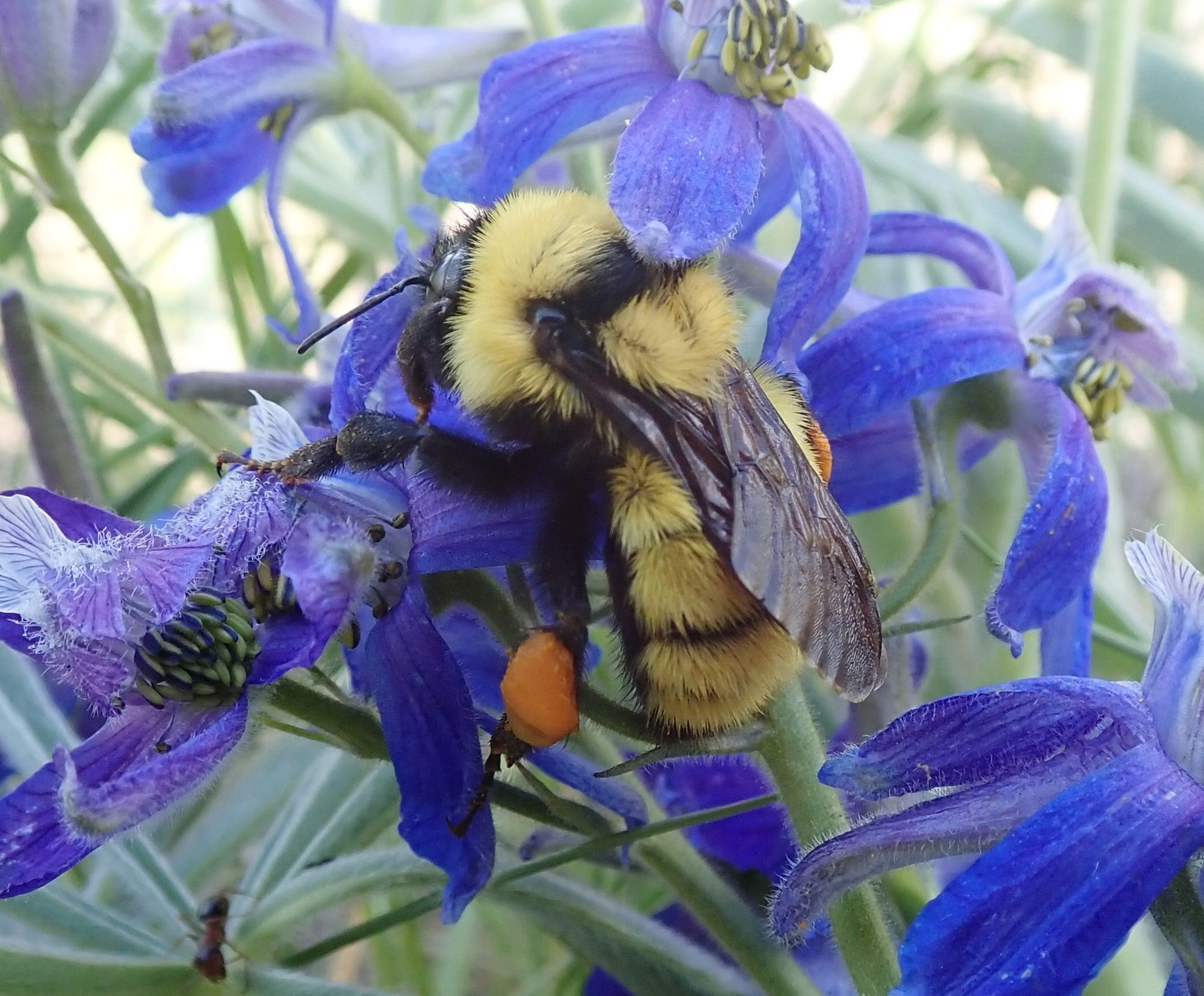
This is the time of year when you'll see large, queen bumble bees flying slowly over the ground surface, landing frequently to check out potential holes. Their search for a cavity filled with old grasses and leaves can take up to two weeks, and competition is fierce because queens will readily kill each other to steal nests.
Queens are already carrying sperm from mating with males the previous summer, so once they find a nest they make a thimble-like pot of wax that they start filling with nectar. At the same time they scrape pollen they've collected from flowers onto the floor of their nest and lay 8-10 eggs on this carpet of pollen.
The next month is a time of continuous work for the queen as she alternates between incubating her eggs, larvae, and pupae using her body heat and foraging for more food.
Subsequent broods of workers eventually take over nest duties so the queen can focus on laying more eggs, and then sometime in the summer the colony produces 100-1000 males and new queens who leave the colony, find mates, and either die (males) or prepare for winter hibernation (females).
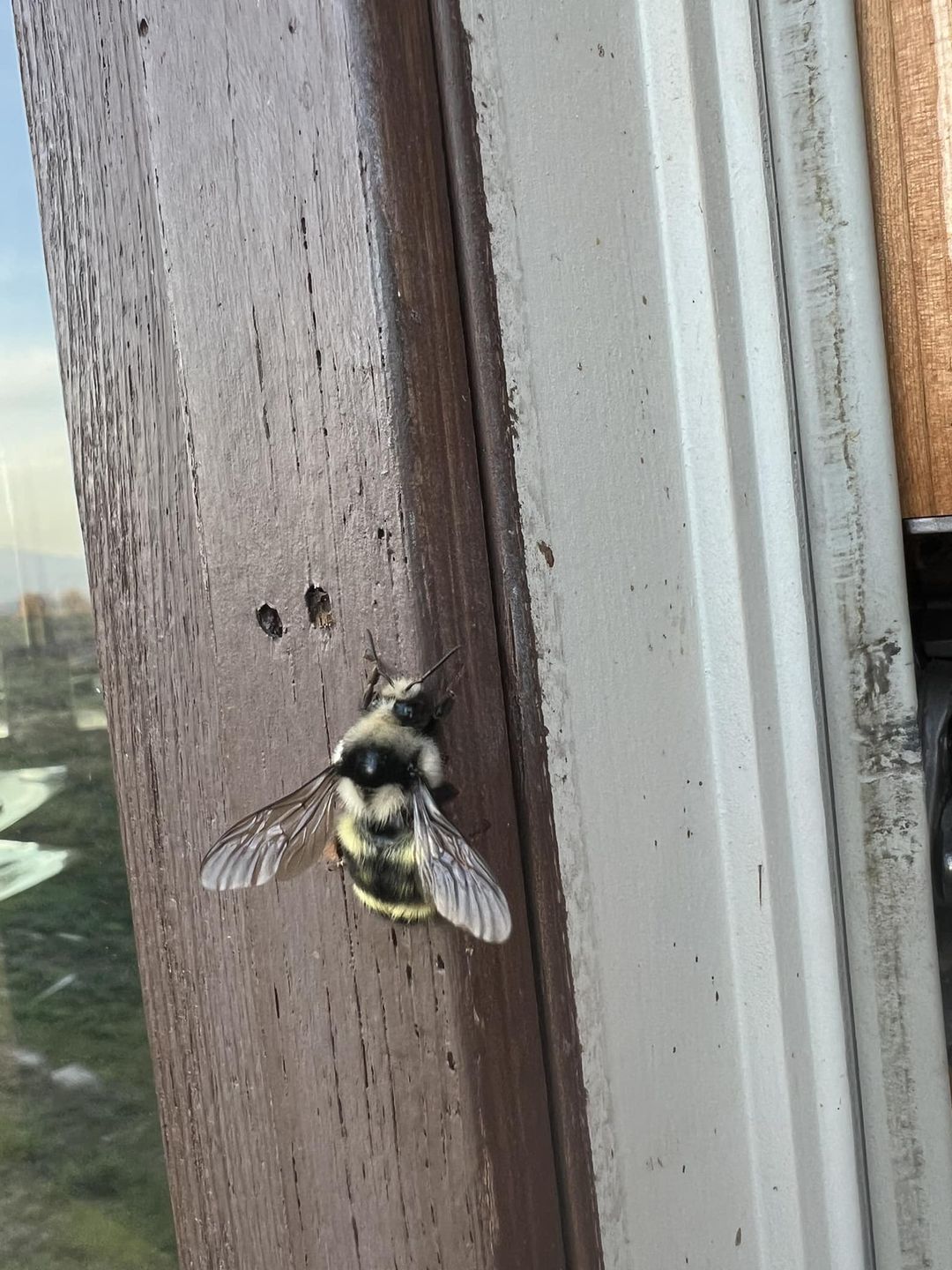
Twenty-one species of bumble bees can be found in and around the Methow Valley. Some are easy to identify, while others are extremely hard to separate (anyone keen to dissect bumble bee penises?). At some point we'll create an identification guide if you're interested in learning how to recognize our local bumble bees!
